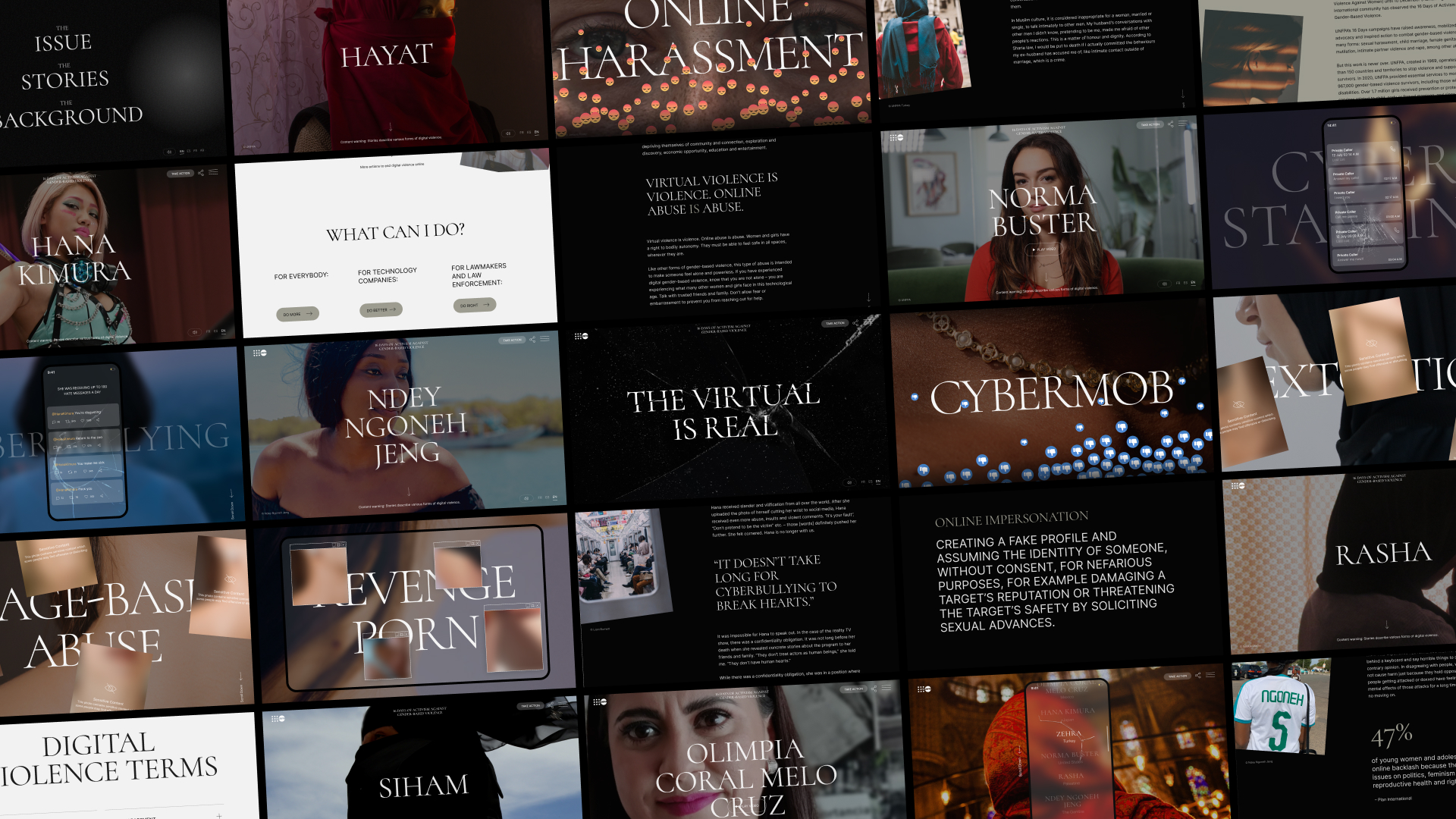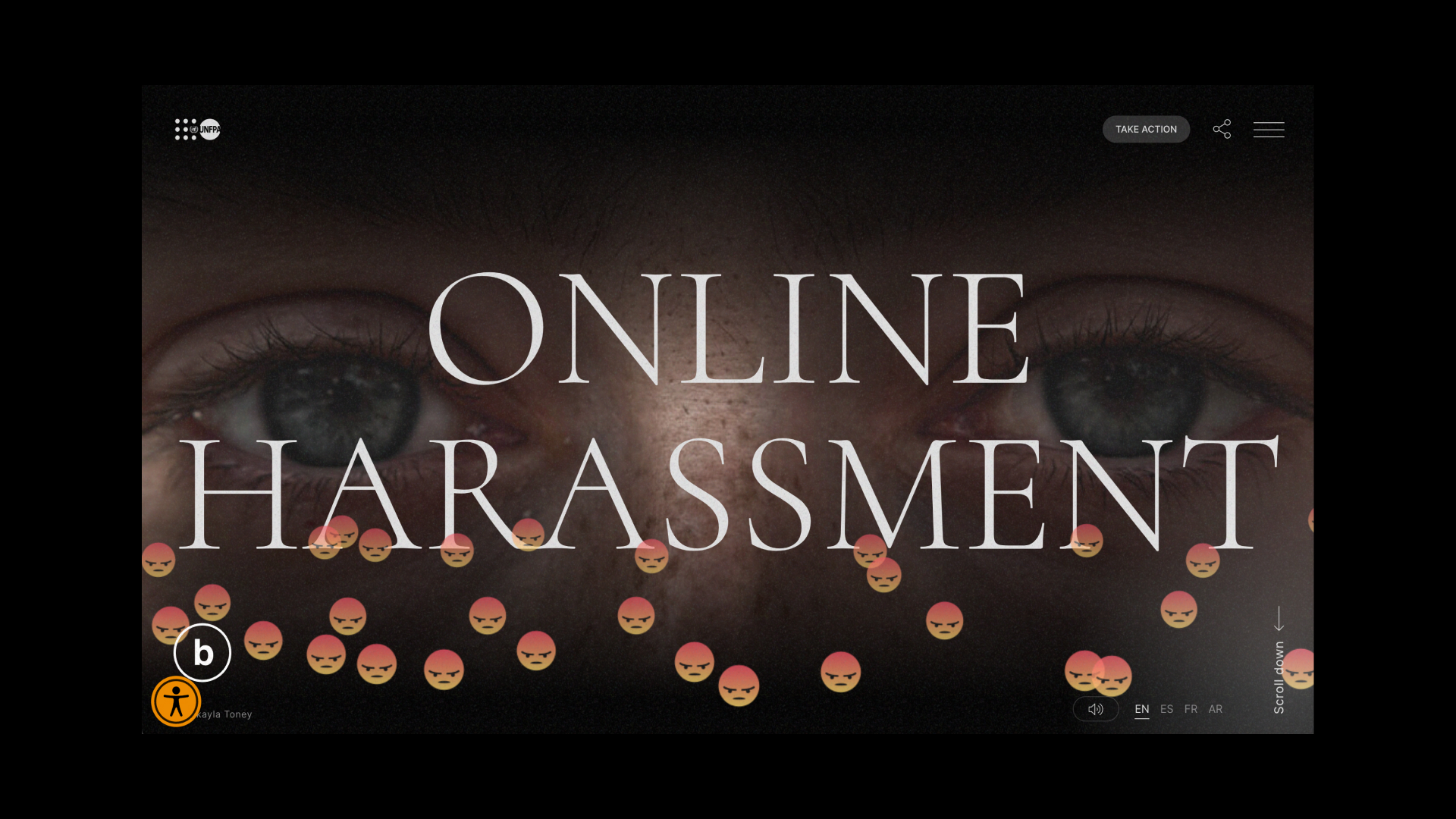
"The most important thing was that the story subjects, once they had seen the website, were glad to have shared their stories in the hopes of raising awareness towards ending digital violence or helping another survivor feel less alone and not at fault."UNFPA


Q: Tell us about your initial moodboard, wireframe, or prototype. How did things change throughout the process?
A: We had a strong sense of the design from early on and most components of the original approach were consistent from inception to execution. What did change with every iteration was the complexity of the interactive animations until they became hyper real.
Q: What influenced your chosen technical approach, and how did it go beyond past methods?
A: Led by digital editor Riza Cruz and project managed by Nahema Patwari in collaboration with design agency Elkanodata, the project sought to create an immersive storytelling experience that would transport viewers to each girl’s POV. For the ten categories of digital violence identified, we needed a technical approach with enough flexibility to customize each profile's experiential animations.When did you experience a breakthrough or an "a-ha" moment during this project?
We felt compelled to bring to life the blur between our online and offline worlds. An “a-ha” moment, or the missing experiential piece, was the cracking effect of the mobile screen — both the visual and audio components — which broke the proverbial "fourth wall" so that the experience of digital violence could tangibly break through the screen.

Q: What web technologies, tools, and resources did you use to develop this?
A: UNFPA works in over 150 countries, and digital media is the best way to widely show our work from every corner of the world. But with the technical accessibility limitations of this global digital audience, i.e. lower bandwidths, older browsers and language versions, Elkanodata had to creatively problem solve a variety of "lower-tech" solutions that worked using HTML, Javascript, Sass/CSS, Webpack and GSAP to integrate into a Drupal CMS.
